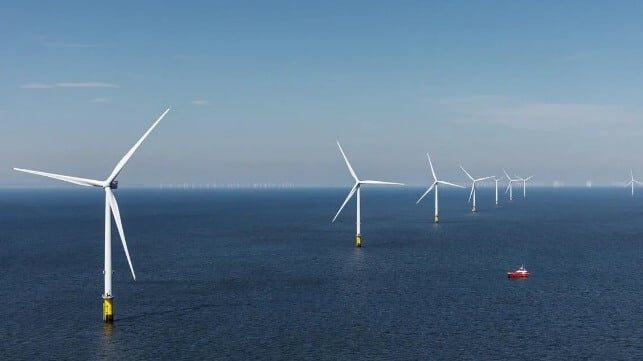Ørsted Halts Hornsea 4 Project, Dealing Blow to UK Renewable Energy Goals
Danish renewable energy leader Ørsted has made the difficult decision to halt progress on the fourth phase of a key UK offshore wind energy project, a move that poses a significant setback to the UK’s renewable energy ambitions. Despite the UK government’s increased support for such projects and a strong commitment to wind energy, Ørsted has cited rising costs and risks as reasons for discontinuing the endeavor.
The decision to discontinue the Hornsea 4 project in its current form was driven by a combination of factors including escalating supply chain costs, higher interest rates, and heightened execution risk. These challenges have led to a decrease in the expected value creation from the project, prompting Ørsted to reassess its feasibility. Nonetheless, the company reaffirms its unwavering dedication to the UK market.
Situated approximately 40 miles off the UK coast, Hornsea 4 was designed to have a capacity of 2.4 GW, making it Ørsted’s fourth gigawatt-scale project in the Hornsea zone. While Hornsea 1 and Hornsea 2, with a combined capacity of 2.5 GW, are already operational, Hornsea 3, boasting a 2.9 GW capacity, is currently under construction.
Ørsted secured the Contract for Difference (CfD) for Hornsea 4 in September of the previous year and had been aiming to make a final investment decision later in the current year for the wind farm, which would have powered approximately 2.6 million UK households. The CfD agreed upon a strike price of £58.87 ($77.40) per megawatt hour (MWh), ensuring a fixed price for the electricity generated for the first 15 years.
However, changing dynamics within the offshore industry have compelled Ørsted to discontinue the project. The company emphasizes that these new developments have amplified the execution risk and diminished the value creation of the project, rendering it unviable to proceed in its current form.
Financial Implications and Future Outlook
The decision to cease further expenditure on Hornsea 4 and terminate supply chain contracts will have significant negative impacts on Ørsted’s financials. The company anticipates incurring costs ranging from $533.4 million to $685.7 million in 2025 to suspend the project. This includes an EBITDA impact of $475 million to $533.4 million, encompassing a write-down of offshore transmission assets and a provision for contract cancellation fees. Additionally, there will be a write-down of between $76 million and $152.3 million in capitalized construction costs.
Rasmus Errboe, the Group President and CEO of Ørsted, explained, “Our capital allocation is based on a strict and value-focused approach, and after careful consideration, we’ve decided to discontinue the development of the Hornsea 4 project in its current form.” He attributed the decision to adverse macroeconomic developments, ongoing supply chain challenges, and escalating execution, market, and operational risks that have eroded the project’s value creation.
Despite the setback with Hornsea 4, Ørsted remains optimistic about its operational performance, having surpassed 10 GW of offshore capacity in the first quarter of the current year. The company reported an 18% increase in operating profit (EBITDA) to $1.3 billion compared to $1.1 billion in the same period last year.
While the challenges in the offshore industry persist, Ørsted has maintained its full-year guidance of between $3.8 billion and $4.2 billion, excluding earnings from new partnership agreements and impacts from cancellation fees. The company is also committing between $7.6 billion and $8.2 billion in capital expenditure for the year.
Despite the disappointment of discontinuing the Hornsea 4 project, Ørsted’s commitment to the UK market and its strong operational performance underscore its resilience in the face of industry challenges. As the renewable energy landscape continues to evolve, Ørsted remains a key player driving the transition towards a sustainable energy future.

